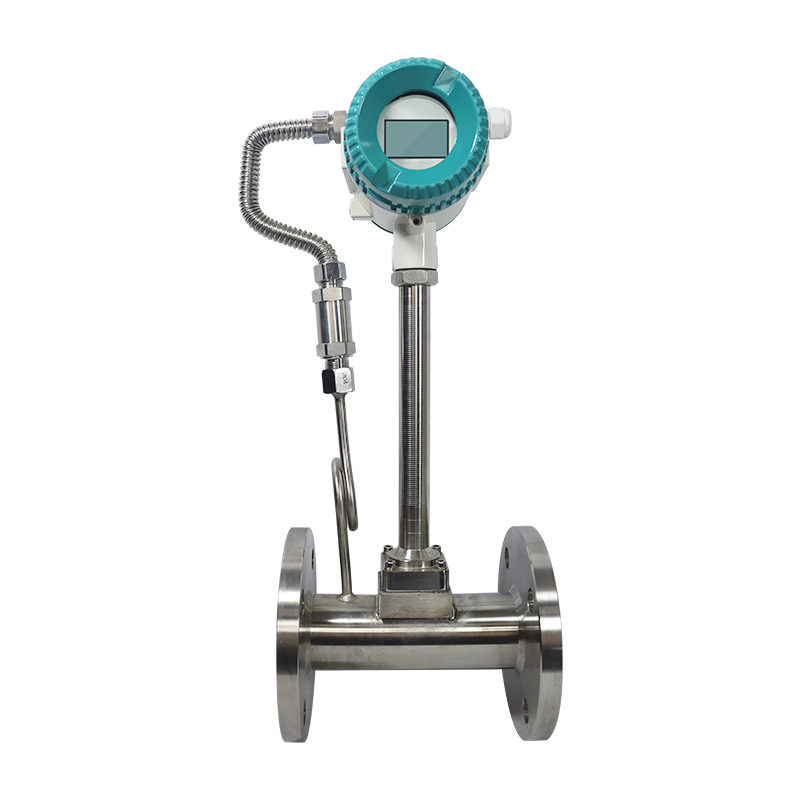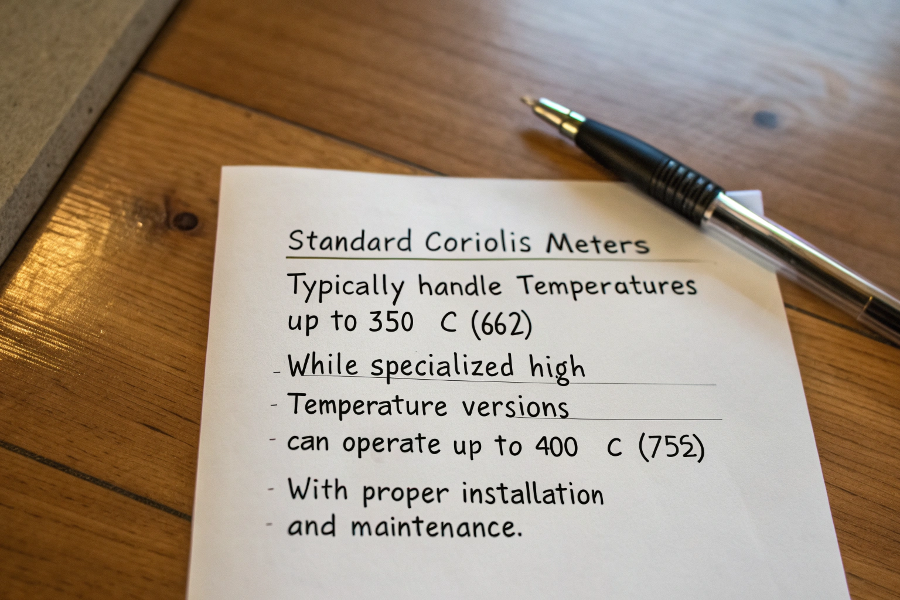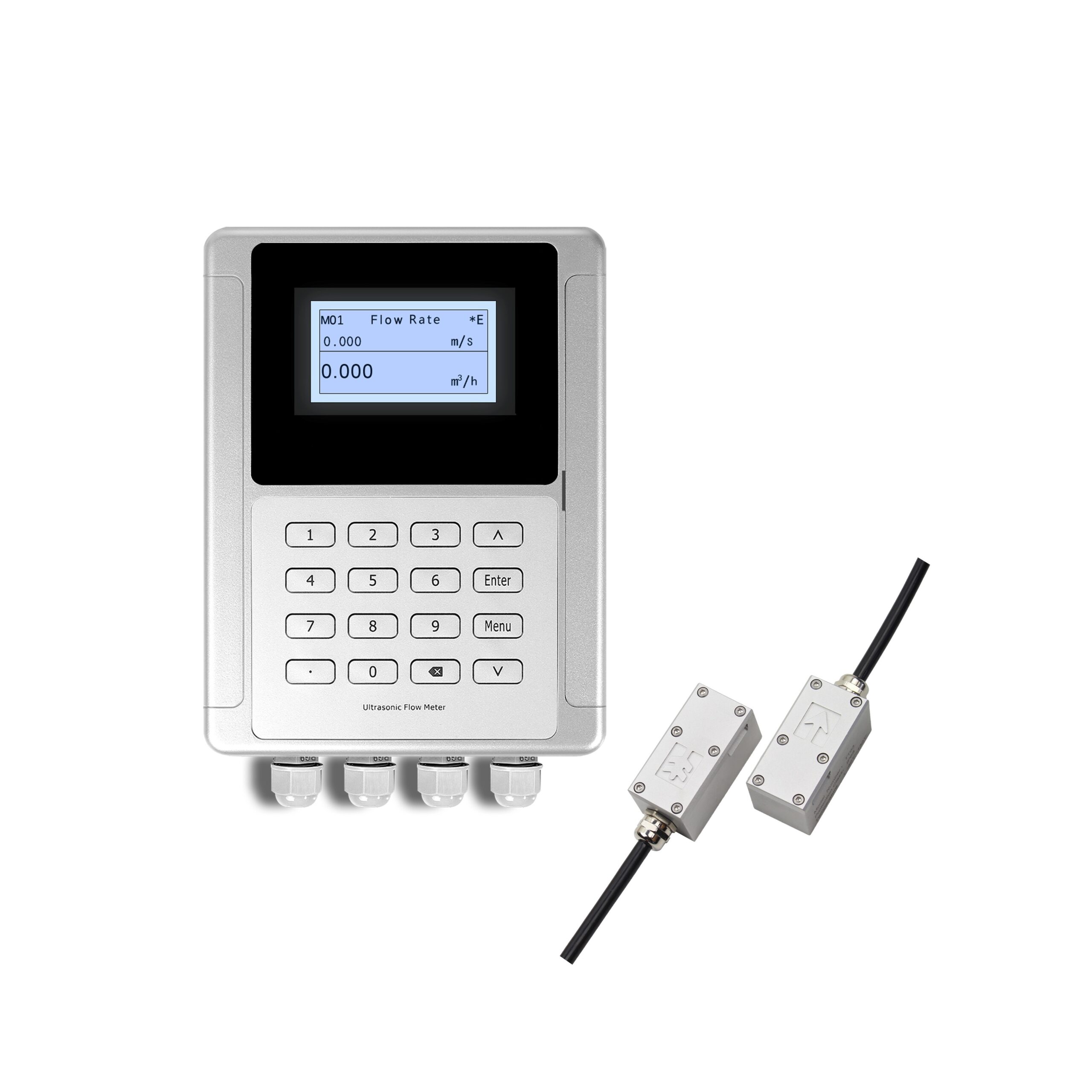Managing flow measurement in high-temperature processes poses significant challenges, often leading to equipment failure and inaccurate readings.
Vortex flow meters can handle process temperatures up to 400°C (752°F) with standard sensors, while special high-temperature versions can measure flows at temperatures reaching 800°C (1472°F).
 High Temperature Vortex Flow Meter
High Temperature Vortex Flow Meter
Let me share insights from my experience with high-temperature flow measurement applications.
What Are The Limitations Of Vortex Flow Meter?
High-temperature applications push flow meters to their limits, making it crucial to understand their constraints.
Vortex meters face limitations in extreme temperatures, requiring special materials and designs when operating above 400°C, and may need frequent recalibration due to thermal stress.

Vortex Flow Meter Limitations
Based on my field experience:
Temperature-Related Limitations
-
Material Constraints
Temperature Range Material Type Limitations Up to 200°C Standard Steel Normal operation 200-400°C Stainless Steel Regular monitoring 400-800°C Special Alloys Higher cost Above 800°C Limited options Not recommended -
Performance Factors
- Thermal expansion effects
- Sensor sensitivity changes
- Electronic component limits
- Material degradation rates
Design Considerations
-
Critical Elements
- Remote electronics options
- Cooling systems integration
- Insulation requirements
- Maintenance access points
-
Installation Requirements
- Thermal stress management
- Expansion compensation
- Heat dissipation needs
- Safety considerations
What Is The Maximum Temperature For A Coriolis Flow Meter?
Process engineers often compare different flow measurement technologies for high-temperature applications.
Standard Coriolis meters typically handle temperatures up to 350°C (662°F), while specialized high-temperature versions can operate up to 400°C (752°F) with proper installation and maintenance.

Coriolis Temperature Range Comparison
Drawing from my expertise:
Temperature Capabilities
-
Operating Ranges
Meter Type Max Temperature Application Standard 350°C Process fluids High-temp 400°C Steam systems Special 450°C Custom solutions Remote 500°C Extreme cases -
Design Features
- Tube material selection
- Sensor positioning
- Electronics isolation
- Cooling mechanisms
Application Considerations
- Installation Requirements
- Heat management
- Vibration control
- Support structure
- Maintenance access
What Is The Ultrasonic Flow Meter For High Temperature?
Selecting appropriate flow measurement technology for high-temperature applications requires careful consideration.
High-temperature ultrasonic flow meters can operate up to 600°C (1112°F) using special waveguides and transducers, making them suitable for extreme temperature applications.

High Temperature Ultrasonic Flow Meter
From my installation experience:
Technical Specifications
-
Design Features
Component Function Temperature Limit Waveguides Signal transmission 600°C Transducers Flow detection 200°C Electronics Signal processing 85°C Housing Protection 150°C -
Performance Characteristics
- Non-intrusive measurement
- No pressure drop
- Wide turndown ratio
- Maintenance-free operation
Application Guidelines
- Installation Requirements
- Proper pipe preparation
- Acoustic coupling
- Signal optimization
- Temperature monitoring
What Is Vortex Flow Meter Pressure Temperature Compensation?
Understanding compensation techniques is crucial for accurate flow measurement in varying process conditions.
Pressure-temperature compensation in vortex meters adjusts flow calculations based on real-time pressure and temperature measurements, ensuring accurate mass flow readings despite changing conditions.
 Pressure Temperature Compensation System
Pressure Temperature Compensation System
Based on my technical knowledge:
Compensation Methods
-
Measurement Parameters
Parameter Impact Compensation Method Temperature Density changes RTD sensors Pressure Mass flow Pressure transmitters Density Flow calculation Real-time updates Viscosity Reynolds number Automatic adjustment -
System Integration
- Built-in sensors
- Digital processing
- Real-time calculation
- Output correction
Implementation Strategy
-
Setup Requirements
- Sensor calibration
- Parameter configuration
- System validation
- Regular verification
-
Maintenance Needs
- Periodic calibration
- Sensor inspection
- Data verification
- System updates
Conclusion
High-temperature vortex flow meters provide reliable measurement when properly specified with appropriate materials and compensation techniques, making them valuable tools for demanding process applications.
